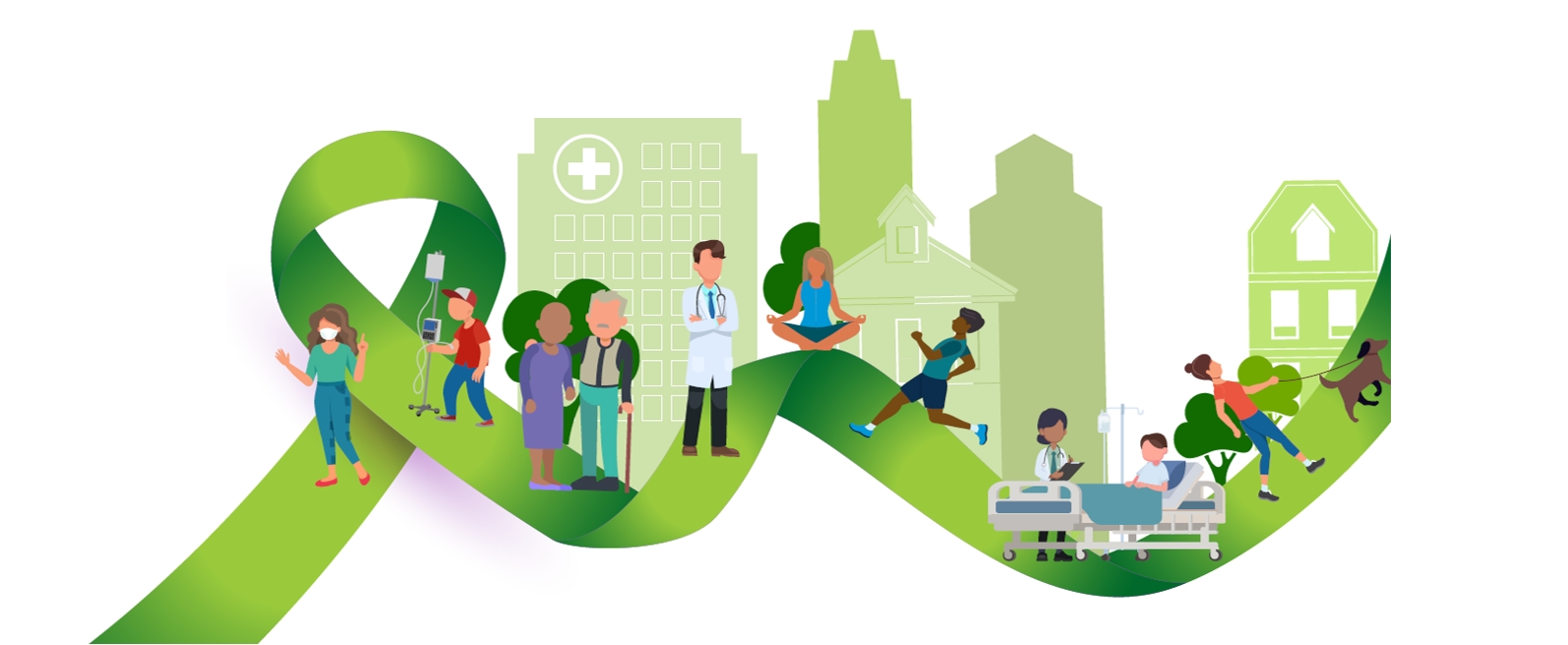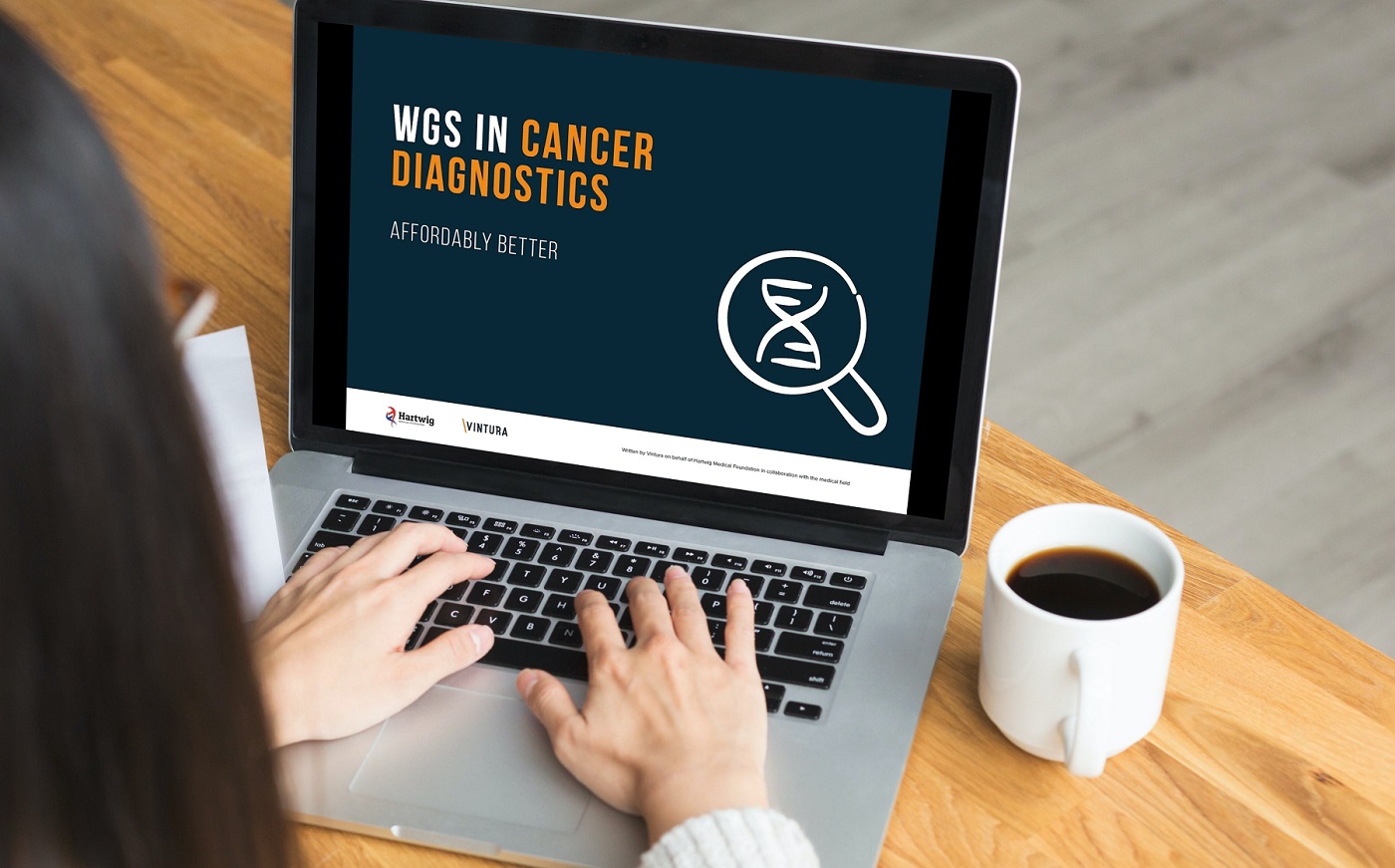But with growth stalling, a chronic shortage of nurses and other healthcare workers, and demand rising apparently inexorably, cancer care decision-makers face a difficult challenge: to continue to deliver cancer care according to the highest standards, we need to innovate. We must redesign how cancer care is delivered, in order to create a system which is continuously improving and always seeking and finding new ways to deliver better care more efficiently.
Working with stakeholders including members of the EFPIA Oncology Platform, a collaboration of 19 companies from the European research-based pharmaceutical industry, as well as hospitals, health authorities across Europe, we have examined ow cancer care can be redesigned and reimagined for this new socioeconomic reality.
Key trends for opportunities
The good news is that there are five key trends which offer real opportunities to redesign cancer care to make it more effective, more affordable and more sustainable:
1. Artificial Intelligence and Machine Learning
Artificial intelligence is software which can mimic human behaviours, while machine learning offers human responses which can be developed by a computer without needing explicit training. In healthcare, AI can be used to reveal appropriate intervention targets and developing strategies for personalising medicines during clinical development, testing and implementation of new therapies.
An example of this is a recent pilot which analysed the CT scans of lung cancer patients. Traditionally this is a very time-consuming job which requires the painstaking analysis of dozens of images by a radiation oncologist or specialist technician. By switching to AI-enabled software to support this process, the time taken to examine the CT scans of each patient has been reduced by 40%. Earlier detection also has a dramatic effect on survival, demonstrating that Quality and efficiency improvements can go hand in hand.
2. Digital Health and Digital Medicine
Digital Health is when physicians, patients and other stakeholders use digital methods such as wearables, online patient records and portals, and even social media, to interact, rather than restricting contact to clinical settings. This approach enables communication and generates real-world data about patients, their disease and their adherence to treatment. Digital medicine takes this a step further, using digital health to inform diagnosis and treatment.
Digital health solutions can be relatively simple, such as using interventions such as SMS text messaging, smartphone apps, video games and social media to discourage smoking, or more sophisticated, such as a pilot which used smartphone apps to help patients take photos of suspicious skin lesions in order to assess whether they are likely to be cancerous.


3. Precision Medicine & Biomarker Testing
Precision medicine and biomarker testing uses molecular information, phenotypic information, and other patient health data to generate insights which can prevent, treat, or predict disease. This enables significant efficiency gains by delivering the right treatment earlier to patients and sometimes avoid lengthy treatment regimens.
Capacity extending therapies can deliver equal or better outcomes for patients as they reduce the need for clinical management and hospital visits. Examples include home-based therapies, fixed-duration or ‘treat to remission’ therapies and other treatments which have fewer adverse events, higher transfusion independence or lower monitoring needs. Patient –initiated follow-up also empowers patients to self-manage, reducing the frequency of clinically unnecessary follow-ups.
4. Out of hospital care
New ways of delivering cancer care in community settings – at the family doctor or a local clinic or pharmacy, for example – or even at home, can offer a less time-consuming, less disruptive way for patients to follow cancer care pathways without visiting hospitals. As well as freeing up beds and other scarce hospital resources, this can help patients and their carers remain productive without compromising care quality or patient outcomes.
A pilot scheme in France has found that delivering subcutaneous injections – which are traditionally performed in hospital – at home reduced the cost of each injection by some 20%, while in Italy home-based subcutaneous blood cancer treatments were found to reduce indirect costs such as travel expenses and working days lost by 70% for patients and carers alike.
5. Curative & Capacity Extending Therapies
New cancer therapies can provide the right care at the right time, sometimes helping to cut the number of hospital or other visits each patient makes to receive care. This in turn reduces waiting lists, lowers number of in-patient stays and cuts the number of patients requiring outpatient follow-ups – further freeing up resources for redeployment or reinvestment elsewhere in the system
A pilot program providing physical exercise sessions, personal trainers and psychological support at local cancer centres for around 15 weeks before surgery resulted in improved quality of life, significantly greater tumour regression and a reduction in the length of post-operative stays.
In “Innovation for Sustainable Cancer Care”, the new white paper from Vintura, we go into much more detail about initiatives promoting sustainable cancer care and how they are showing a way forward in today’s challenging economic and demographic environment.
Healthcare is a hostile environment for innovation
All these innovations face the simple fact that healthcare is a hostile environment for innovation. Progress is slow, with most innovations never making it past the pilot stage, and almost never being adopted at scale. While innovation is the right therapy for healthcare, unfortunately the patient is not adherent to the treatment.
So what is the answer? Nothing less than a complete change in mindset and systems. Read more about this in our second blog on this theme, coming soon.
Let’s discuss
Inspired to share your thoughts? Or would you like to learn more about how Vintura can support you in addressing key policy topics? Bas Amesz would be delighted to hear from you to pick up the conversion.
This report is explicitly endorsed by the following organisations
Acute Leukemia Advocates Network (ALAN)
Digestive Cancers Europe
All.Can
InvestNL
Technical University Delft, the Netherlands
EIT Health
Europa Uomo
European Cancer Patient Coalition
European Federation of Pharmaceutical Industry Associations (EFPIA)
Evita Hereditary Cancers
Myeloma Patients Europe
European Association for Hospital Pharmacists (EAHP)
Erasmus MC, University Medical Center Rotterdam, the Netherlands
This report was commissioned and financed by the EFPIA Oncology Platform
#Europe #Cancer #Innovation #Sustainability #EUCancerPlan #WeWontRest



